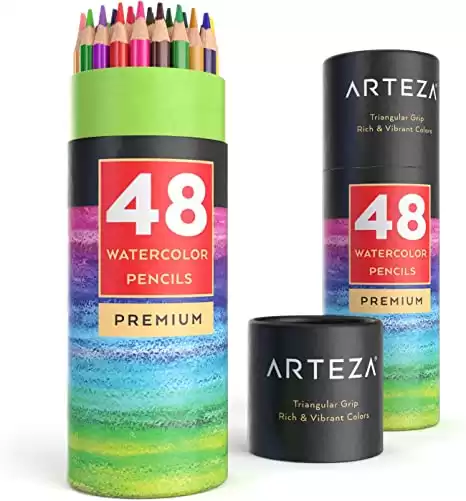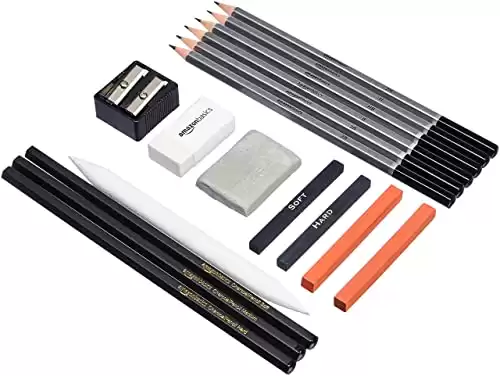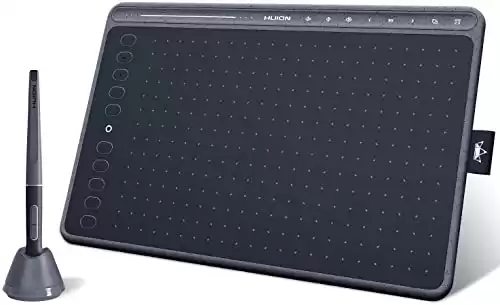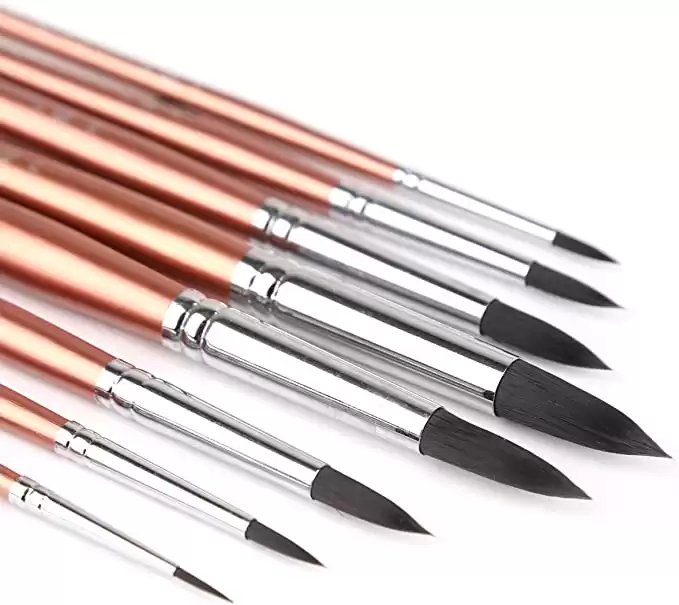Learning how to draw animals, plants, and anything else you see may look impossible, but it’s nothing more than a set of skills that you can learn.
Have you ever sat and watched someone sketch? Even though the artist probably made it look easy, it resulted from lots of practice. Like many skills, the ability to draw takes time and work to develop.
As a child, I would watch my grandmother draw and paint. She painted everything from abstract art to hot air balloons at sunrise and various animals and plants — in nearly every form of media possible. Her work won numerous awards over the decades and, to this day, leaves me in awe of her skill and vision.
Building Basic Drawing Skills
One skill she repeatedly tried to get me to master (or at least do more than a halfhearted attempt) was to draw the four basic shapes: cone, ball, cube, and cylinder. Something that I repeatedly ignored until I started drawing seriously a few years ago. It wasn’t until I spent a little time learning them that I became more able to create the images I always wanted. Take the time to create each shape, complete with shading to create a three-dimensional image.
The reason these basic shapes are so important is that all things in nature have one or more of them in their composition. If you study the object you want to draw, you can see which shapes compose the core and give yourself a foundation on which to build it. In addition to this, learning to create these four shapes gives you the basics for understanding light and shadow.
Drawing More Complex Objects
Once you are confident with basic shapes, start studying the world around you. Find the shapes that form the foundation for things. For example, a flower has a circle at the center, and the petals may also be circles, or they may be a different shape. Tree trunks are often made up of cylinders, and a horse has a combination of circles, squares, and cones. You get the picture.
In any event, I’ve included a picture of the four shapes, shaded and finished, to get you started. After that, try a few of the tutorials. When you complete them, I would love it if you’d tag me on Instagram with your drawing.
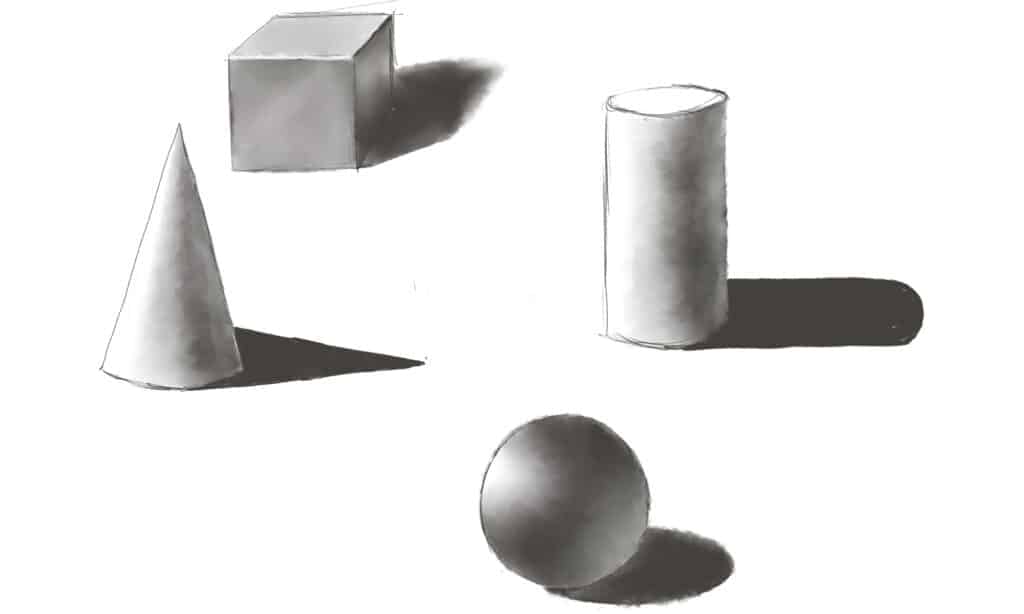
| Tutorial | Basic Skills Required |
|---|---|
| Draw a Butterfly on a Flower | If you’re just drawing the butterfly, circles and triangles make up its shape. The flower is mostly circles and half-circles. |
| Draw a Cat Running | Cats are both angular and sinewy. Their ears have sharp points (triangles/cones), while their bodies (circles and cones) sometimes move like they have no bones. |
| Drawing a Dog | Dogs’ torsos and rumps are circles, then add a cone for the neck, a circle, and a square for the head. Legs you can fill in around their skeletal structure. |
| Draw a Horse | Quadrupeds like horses, dogs, and cats have similar base structures with variations for species. It’s most important to get the proportions right, but you’ll need the same shapes here as you did for the dog. |
| Draw a Sunflower | Circles and cylinders! This is the easiest of the tutorials and gives you practice on shading and light. |
| Draw a Tree on a Cliff | This tree is more free-form than some, but the trunk is essentially a cylinder. |
| Draw a Turkey | Turkeys always look like a blob of bubbles to me, shape-wise. In any case, the turkey is pretty challenging because of the shading you need to add. The basic shape circles aren’t really difficult. |
| Draw a Unicorn | For this drawing, the unicorn is coming toward you at an angle. It’s in sort of a half-trot-half-hop-direction change. This means that unlike the horse drawing tutorial, the shapes are more compressed because you can’t see as much of the animal. |
| Draw a Wolf | Even though its body type is that of a dog, there’s a general scruffy-yet-beefy appearance that you need to keep at the forefront of your mind as you work to draw a wolf. |
What You’ll Need
Regardless of which project you choose, you’ll need drawing supplies. I’ve included links to some of my favorites below. The list includes supplies for digital and paper artists.
Start with the basics, like pencils and paper, and add more supplies over time. The book, Animals in Motion, will provide inspiration as well as invaluable information on how to draw natural looking animals.
- Features a comprehensive selection of Muybridge's famous animal photos
- Different animals are shown performing typical actions, such as walking, running, leaping, or flying
- All photos appear on ruled backgrounds, while most are taken from 3 angles
- Some actions feature as many as 50 shots
- Muybridge is considered to be the ultimate reference for artists
- 157 lb. paper with neutral pH
- Sturdy, 2-ply paper with smooth rendering surface
- Perfect for pencil, pen, dry brush, and other mediums
- 11" x 14"
- Made in the USA
- Includes 48 artist-grade colored pencils
- Highly pigmented
- Water-soluble
- Unique triangular design makes these pre-sharpened watercolor pencils easier to hold and control
- Break-resistant
- Designed for artists of all skill levels
- 17-piece set includes pencils, charcoal pencils, compressed sketch sticks
- Also includes a standard eraser, a kneaded eraser, a blender/smudge stick, and a dual-barrel sharpener
- Allows artists to experiment and combine different techniques
- Budget-friendly
- Set of 2
- Add a pop of milky white color to any artwork
- Features smooth gel ink
- Works equally well on light or dark-colored paper
- Latex-free grip for comfortable drawing
- Pack of 6
- Kneaded rubber/gummy erasers
- Erases and/or lightens most dry media
- Also helpful for blending, highlighting, shading, smoothing, correcting, and brightening drawings
- Easy to clean by kneading between your fingers
- This is the first graphics tablet equipped with 8 multimedia keys
- The multimedia keys are intuitive and can be used for a variety of artistic needs
- Can be connected with Android 6.0 (or later) phones or tablets via an adapter
- Battery-free stylus doesn't require a battery or charger
- Sleek and slim design available in 3 colors?
- Wear on either hand
- Prevents smudges from your hand transferring to your tablet
- Comfortable, soft, Lycra and Nylon
- Flexible
- Black
- Suitable for watercolors, acrylics, inks and gouache
- Professional round brushes
- Made from goat hair and high-grade nylon
- Sturdy and durable
- Ergonomic wooden handles with champagne-colored metallic finish
The photo featured at the top of this post is ©
Thank you for reading! Have some feedback for us? Contact the AZ Animals editorial team.





